| |
11/6/2011. A new era in observing! Putting it that way is too dramatic by half, but it's significant. I got the telescope back from Lunt after repairs just in time for the Sun to move too far south to observe down in the holler, so I finally set up a telescope under the wider skies of the cul de sac. Here's Active Region 1339 and environs. It took about half an hour to haul the solar outfit up in the Honda, assemble it, take several 20s (300 frame) clips, and head home. The process will get faster with practice. Don't forget an observing hood; think about taking a table. I'm leaving the mount, tripod, camera, battery, hood, and telescope in the car. The Aspire One will have to travel to and fro. That's right, it's a notebook commuter.
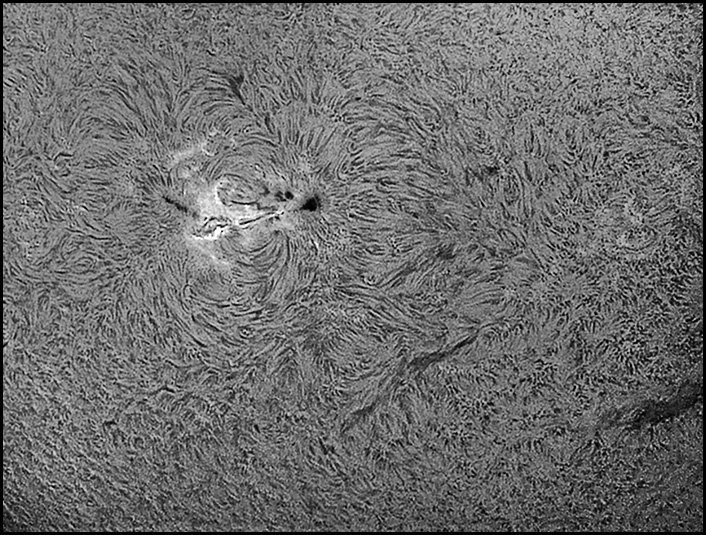
Active Region 1339
11/12/2011. Second try from the Cul de Sac Station. This time I used the trunk of the Honda as the dark area for composition, focus, etc., but I still ended up doing a balancing act with the computer, the LXD55 controller, and a wooly pully sort of draped over my head. Better, indicative of the right way to go about things, but not quite right yet. Still, I finished with this two-image mosaic of some lively action near the center of the solar disk. Waiting for still air matters.
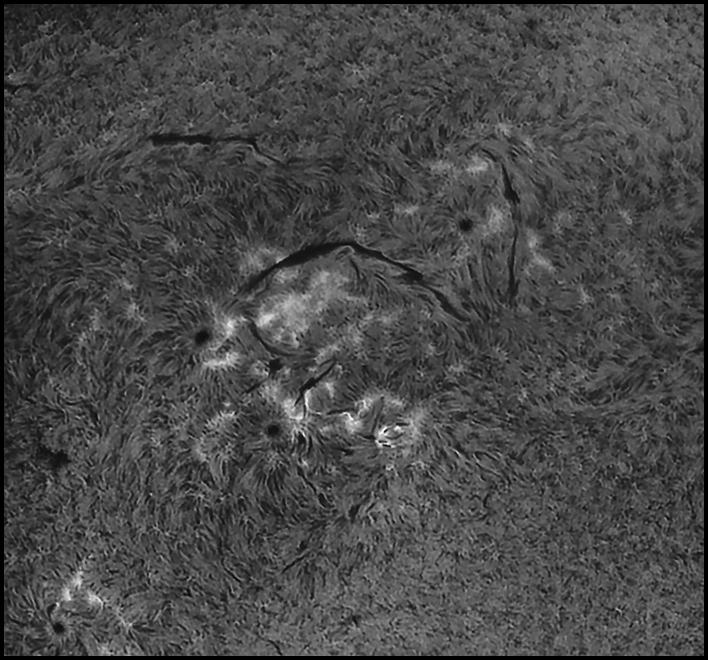
Active Region 1341 (and neighbors?)
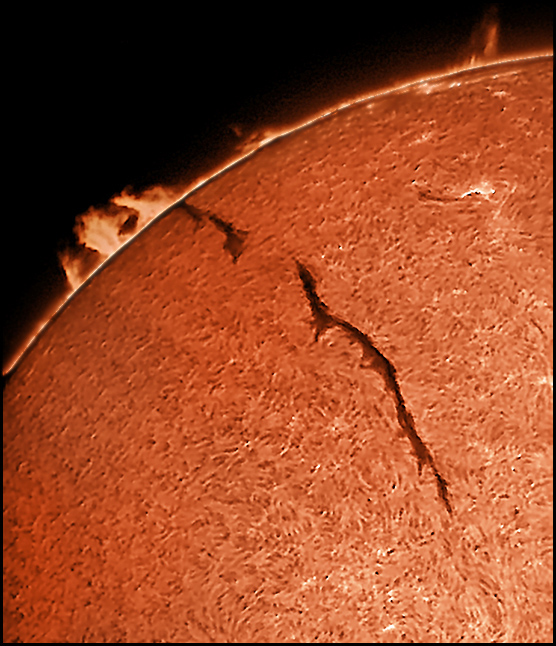
Humongous filament
(video'd through unsteady air)
11/14/2011. Forewarned of a large prominence to photograph, I took the Honda back to the cul de sac, clipped a black fleece over the open trunk, propped up a box to use as a table, and happily imaged for half an hour or so:
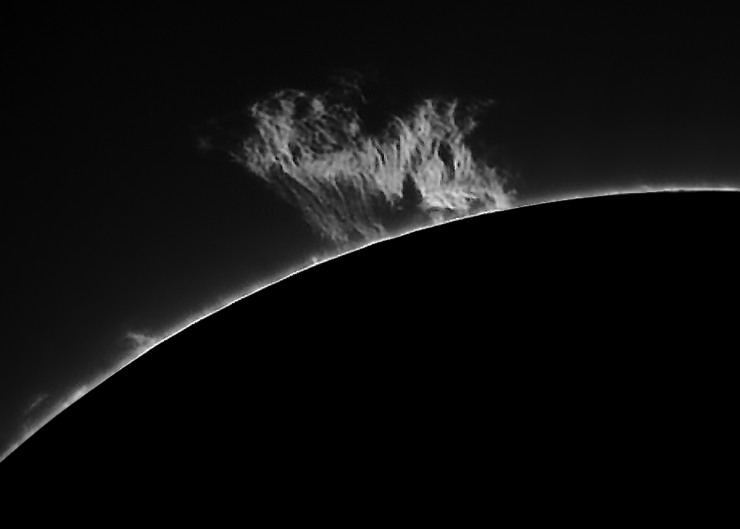
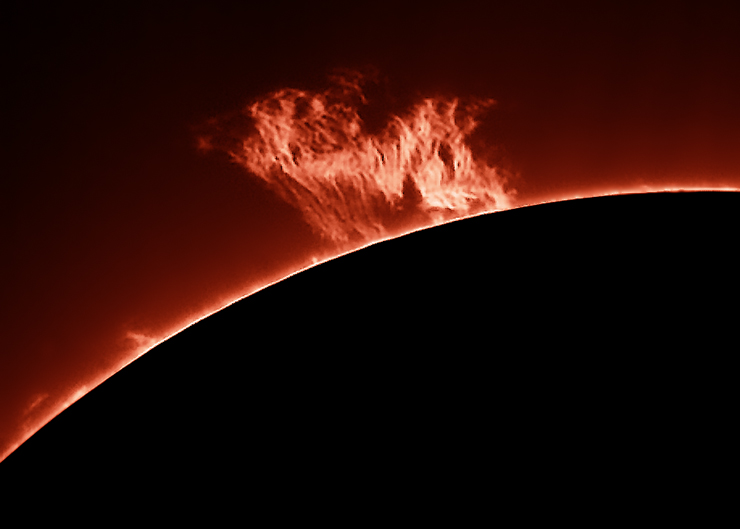
300x20ms, additional 6db of gain
Another look at 1341 and at the remnants of that huge filament, both through steadier air:
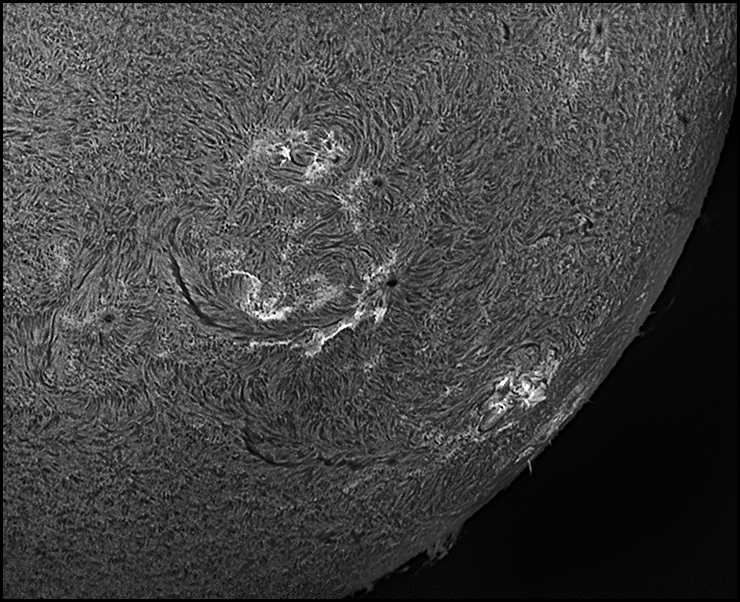

I wasn't entirely pleased with the prominence photos so I reprocessed them using Registax 5.1 to select specific alignment points within the curtain of plasma. Then I combined those images with the best efforts of AVIStack 2.0 to sharpen surface detail. Here, try these:

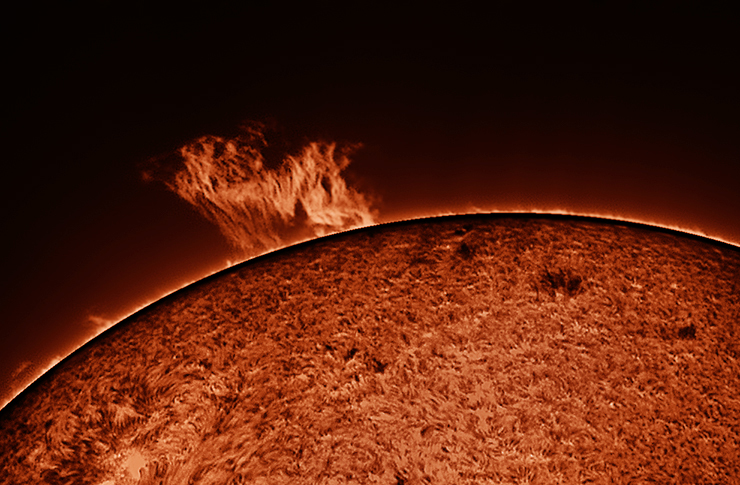
Except where noted, solar photos are made with a Point Grey Research Chameleon camera behind a Lunt Solar Systems 60mm THa solar telescope double-stacked wtih a 50mm front etalon for an achieved bandwidth of about 0.55 Angstroms. The telescope uses a B600 blocking filter and is mounted on a Meade LXD55 German equatorial. An Acer Aspire One netbook running Point Grey's Flycap software provides camera control and capture services via USB 2.0. Images typically begin as 20 second AVI's captured at 15 fps. 300 frame clips are aligned and stacked using Registax 6 or AVIStack 2.0. The resulting files are processed via wavelet functions in Registax and / or the FocusMagic 3.0.2 deconvolution plug-in in Photoshop CS4. The imaging train usually includes an Orion "Shorty" 2x barlow screwed into the 1.25-inch prime-focus snout. Exposures are on the order of 4-8 ms with gain set to 10-12 db. The barlow is sometimes replaced by an Antares 0.5x telecompressor sandwiched between the 1.25-inch snout and the C-adapter on the PGR Chameleon; this produces a full-disk image (during most of the year) and allows exposures in the 1ms range with slightly less gain. A Feathertouch 0.8-inch focusser mated to the OTA via a basement-machined adapter provides solid, no-guesswork focusing.
|